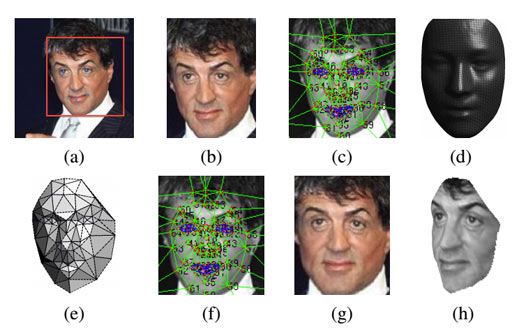Facebook's Facial Verification Software Can Recognise Faces As Humans Do
With the evolution of new advancements, machines have been taking over the capabilities that were once supposed to be human-specific. Deep learning is a field of Artificial Intelligence that emphasizes on neural networks which ultimately aims at making the machine display such tremendous potentials. On the similar lines the social networking giant, Facebook has been working on a facial verification research project that will enable the system to recognize different images belonging to the same person.

There have been trials of many face matching systems in the past but the researchers at Facebook claim to have achieved the accuracy standards like never before. The software termed as #-Link-Snipped-# is said to be working with 97.25 percent accuracy in recognizing photos of the same person, which is astonishingly close to the human accuracy percentage that stands at 97.53. Yaniv Taigman, a member of Facebook's research team, suggests that the system has improved a lot over its past results. This improvement can be attributed to the learning capabilities of the nine layered neuron network that uses more than 120 million parameters. The network has been working with a wide data-set provided to it in the form of four million labeled images belonging to over four thousand Facebook users.
DeepFace works in two basic stages: face orientation and recognition of descriptors. In the first stage, it re-orients the face by applying a 3-D transformation piece by piece, such that the face is perceived as front looking. Second stage refers to the feeding of transformed images to the intelligent system that calculates certain numeric descriptors for the images separately. Once the descriptors match, these images are concluded to be similar. Facebook has released a research paper on the project with the purpose of getting feedback from the research society.
According to the researchers, once ready, the technology can be used by Facebook to suggest the tags in user photographs. However, there is little doubt that this technology will be of greater significance than just making the social network more interactive. With such monstrous user database, Facebook certainly was the best place for such a system to learn and evolve.
Source: #-Link-Snipped-#

There have been trials of many face matching systems in the past but the researchers at Facebook claim to have achieved the accuracy standards like never before. The software termed as #-Link-Snipped-# is said to be working with 97.25 percent accuracy in recognizing photos of the same person, which is astonishingly close to the human accuracy percentage that stands at 97.53. Yaniv Taigman, a member of Facebook's research team, suggests that the system has improved a lot over its past results. This improvement can be attributed to the learning capabilities of the nine layered neuron network that uses more than 120 million parameters. The network has been working with a wide data-set provided to it in the form of four million labeled images belonging to over four thousand Facebook users.
DeepFace works in two basic stages: face orientation and recognition of descriptors. In the first stage, it re-orients the face by applying a 3-D transformation piece by piece, such that the face is perceived as front looking. Second stage refers to the feeding of transformed images to the intelligent system that calculates certain numeric descriptors for the images separately. Once the descriptors match, these images are concluded to be similar. Facebook has released a research paper on the project with the purpose of getting feedback from the research society.
According to the researchers, once ready, the technology can be used by Facebook to suggest the tags in user photographs. However, there is little doubt that this technology will be of greater significance than just making the social network more interactive. With such monstrous user database, Facebook certainly was the best place for such a system to learn and evolve.
Source: #-Link-Snipped-#
0
